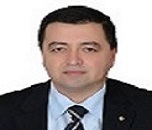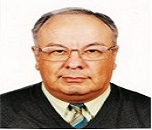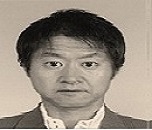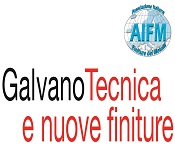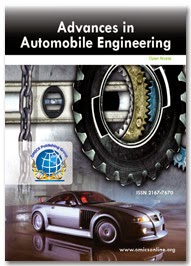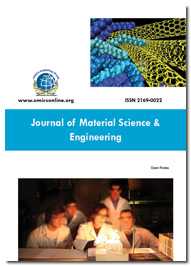Theme: Exploring Advances in Automobile Engineering
Automobile 2017
Track 1: Automotive Engine
As of 2013 there was an inclusive variability of propulsion systems available or possibly available for automobiles and other vehicles. Alternatives included internal combustion engines fuelled by diesel, propane, petrol, or natural gas; hybrid vehicles, fuel cell vehicles, plug-in hybrids fuelled by hydrogen and all electric cars. Fuelled vehicles appeared to have the short term benefit due to the limited range and high cost of batteries. Some alternatives required construction of a network of fuelling or charging stations. With no compelling benefit for any specific option car makers pursued parallel growth tracks using a diversity of options. Reducing the weight of vehicles was one approach being employed.
Related Societies:
FISITA Promoting Excellence in Mobility Engineering
Track 2: Automotive Vehicles and Design Technology
Automotive design is the work involved in the growth of the appearance, and to some scope the ergonomics, of motor vehicles or more specially road vehicles. This most usually refers to automobiles but moreover refers to motorcycles, buses, trucks, coaches, and vans. The functional design and development of a recent motor vehicle is usually done by a large team from several different disciplines involved within automotive engineering. Automotive design is trained by designers who frequently have an art background and a degree in transportation design or industrial design.
Related Societies:
Indian Society of mechanical Engineers
American Society of Mechanical Engineers
Track 3: Fuel Economy
The fuel economy of a vehicle or automobile is the fuel efficiency relationship between the distance travelled and the quantity of fuel consumed by the vehicle. Consumption can be stated in terms of volume of fuel to cover a distance, or the distance covered per unit volume of fuel consumed. Since fuel consumption of automobiles is a major factor in air pollution, and subsequently importation of motor fuel can be a huge part of a nation's foreign trade, many countries execute requirements for fuel economy.
Related Societies :
American Society of Mechanical Engineers
THE CZECH ASSOCIATION OF SCIENTIFIC AND TECHNICAL SOCIETIES
BIG BAJA SOCIETY OF AUTOMOTIVE ENGINEERING
Track 4: Alternate Energy Sources
Alternative energy is any energy source that is an alternative to fossil fuel. These alternatives are intended to address concerns about such fossil fuels, such as its high carbon dioxide emissions, an important factor in global warming. Ocean, wind and solar power are some sources of alternative energy. The nature of what constitutes an alternative energy source has changed considerably over time, as have controversies regarding energy use. Because of the variety of energy choices and differing goals of their advocates, defining some energy types as "alternative" is considered controversial.
Related Societies :
Automotive Research Association of India
Track 5: Automotive Electronics
Automotive electronics are several electrically-generated systems used in road automobiles, such as: carputers, in-car entertainment systems, telematics, etc. Automotive electronics initiated from the need to control engines. The first electronic parts were used to control engine functions and were mentioned to as engine control units (ECU). As electronic controls initiated to be used for further automotive applications, the acronym ECU took on the more common meaning of "electronic control unit", and then specific ECU's were developed. Now, ECU's are modular includes engine control modules (ECM) or transmission control modules (TCM).
Related Societies :
FISITA Promoting Excellence in Mobility Engineering
Automotive Research Association of India
Track 6: Vehicular Automation and Automatic Driving
Vehicular automation includes the use of mechatronics, artificial intelligence, and multi-agent system to support a vehicle's operator. These structures and the vehicles employing them may be labelled as intelligent or smart. A vehicle using automation for tough tasks, especially navigation, may be stated to as semi-autonomous. A vehicle relying exclusively on automation is consequently stated to as robotic or autonomous. After the development of the integrated circuit, the sophistication of automation technology improved. Manufacturers and researchers successively added a range of automated functions to automobiles and other vehicles.
Related Societies :
Indian Society of mechanical Engineers
American Society of Mechanical Engineers
Track 7: Tire Science and Technology
On the surface, tires may not seem even slightly complex. Rubber compound, steel belts, and air: that’s all there is to it. Decades ago that may have been the case, particularly for the consumer market, but in modern years tire manufacturers (including start-ups) are building completely new ideas of tire construction that yield more long-lasting, higher performance, and safer products that are every bit as valuable as other automotive advancements.
Related Societies :
Indian Society of mechanical Engineers
American Society of Mechanical Engineers
Spanish Association of Automobile & Truck Manufactures
Track 8: Braking System
A brake is a mechanical device that obstructs motion by absorbing energy from a moving system. It is used for decelerating or stopping a moving vehicle, axle, wheel, or to prevent its motion, most often accomplished by means of friction.
Related Societies :
Automotive Research Association of India,
Indian Society of mechanical Engineers
Track 9: Automotive Safety
Automobile safety is the study and practice of design, equipment, construction and regulation to minimize the occurrence and consequences of traffic crashes. Road traffic safety more largely includes roadway design.
Related Societies :
FISITA Promoting Excellence in Mobility Engineering
Automotive Research Association of India
Track 10: Automotive Cyber Security
Modern vehicles contain computer systems that enable navigation, communication and entertainment. These units have the potential to generate evidence for a criminal or civil investigation. Research work undertaken thus far looks at applying digital forensic data recovery techniques to a number of automobile systems, both original equipment manufacturer and aftermarket. A number of challenges are faced by the community and are presented along with case studies, data analysis and suggestions for future work.
Related Societies :
FISITA Promoting Excellence in Mobility Engineering
Automotive Research Association of India
Track 11: Automotive Testing
It is very important to do the needful testing for any vehicles or automobile before launching or bring it for market. Automotive testing will help to identify any error or mistakes happened for the vehicle. The below topics are comes under Automotive testing.
Related Societies :
Automotive Research Association of India
Indian Society of mechanical Engineers
American Society of Mechanical Engineers
Track 12: Automotive Industry
The automotive industry is a wide variety of companies and organizations involved in the design, manufacturing, development, marketing, and selling of motor vehicles, several of them are called automakers. It is one of the world's most essential economic sectors by revenue.
Related Societies:
Indian Society of mechanical Engineers
American Society of Mechanical Engineers
Track 13: Noise, Vibration and Harshness (NVH) in Automobiles
Noise, vibration, and harshness (NVH), also well-known as noise and vibration (N&V), is the study and modification of the noise and vibration features of vehicles, mostly cars and trucks. While noise and vibration can be readily measured, harshness is a particular quality, and is measured either via "jury" valuations, or with analytical tools that can deliver results reflecting human subjective imitations. These latter tools belong to the field known as "psychoacoustics." Interior NVH contracts with noise and vibration experienced by the occupants of the cabin, while exterior NVH is largely concerned with the noise released by the vehicle, and includes drive-by noise testing.
Related Societies :
Automotive Research Association of India,
Indian Society of mechanical Engineers
Track 14: Automotive Ergonomics
Use of ergonomic and cognitive ideas and their application has long been utilized by automobile manufacturers to make motors as a lot as protect and relaxed to the customer. The primary objective of inner layout of any car is to maximise the consolation and satisfaction of the passengers. Concepts like HVAC Systems and climate manipulate, automotive force Interfaces, Anthropometric databases, Comfort Factors, Ergonomics and Comfort Design, riding Simulators, Driver Friendly structures and area research, Digital Human Body Modelling etc. are primarily considered when designing the interior of an automobile.
Related Societies :
Indian Society of mechanical Engineers
American Society of Mechanical Engineers
Spanish Association of Automobile & Truck Manufactures
Track 15: Automobile Pollution and Control Management
Motor automobile emissions make a contribution to air pollutants and are a major ingredient in the creation of smog in some large towns. Transportation contributed more than half of the carbon monoxide and nitrogen oxides, and almost a quarter of the hydrocarbons emitted into our air.
Related Societies :
Indian Society of mechanical Engineers
American Society of Mechanical Engineers
Track 16: Emerging Trends in Automotive Engineering
According to research on the World Car of the Year Study in 2014, the key emerging car trends are efficiency, lightweight materials, design, connectivity and new energy. The similar study conducted in 2016 focused on connectivity in cars and the trends that go along side it including safety, autonomous driving, and smartphone integration.
Related Societies :
ConferenceSeries Ltd invites all the participants from all over the world to attend ''3rd International Conference and Exhibition on Automobile Engineering (Automobile 2017)'' during September 28-29, 2017 at Berlin, Germany which includes prompt keynote presentations, Oral talks, Poster presentations and Exhibitions.
Automobile 2017 Conference is an automotive engineering expo which is comprised of 16 scientific sessions and 100+ sub-sessions which have designed to offer comprehensive review and discussion on the current topics and issues of automotive engineering and auto industry. Automotive engineering expo 2017 is one of the few global automotive conferences, which covers all the fields of automotive engineering. In order to make Automobile 2017 conference will make the perfect platform for global networking as it brings together renowned speakers, researchers, business persons across the globe to a most exciting and memorable scientific event filled with much enlightening interactive sessions, world class exhibition and poster presentations.
Target Audience:
- Engineers who are specialized on the specific fields like Automotive engineers, Electronics Engineers, Mechanical Engineers.
- Automotive industry professionals
- Automobile Manufacturers,
- Auto Original Equipment Manufacturers (OEMs), Automotive Part Manufacturers.
- Green Vehicle Manufacturers
- Car Retailers
- Software Publishing Houses specializing in Vehicle Design software’s
- Automobile Engineering Associations, and Societies
- Mechanical and Automotive engineering institutes
- Business Entrepreneurs
Germany is Europe’s number one automotive market in production and sales terms; accounting for around 30 percent of all passenger cars manufactured and almost 20 percent of all new registrations. Germany also boasts the largest concentration of OEM plants in Europe. There are currently 41 OEM sites located in Germany. German OEM market share in Western Europe was more than 51 percent in 2015. Germany is conveniently located next to Poland, the biggest Eastern European market with passenger car unit sales of 355.000 (eight percent annual increase) in 2015.
The automotive industry is the largest industry sector in Germany. In 2015, the auto sector recorded turnover of EUR 404 billion – around 20 percent of total German industry revenue. The automobile industry is one of the largest employers in Germany, with a workforce of around 792,500 in 2015; an increase of almost two percent compared to the previous year.
The Germany automotive industry will perform best in the developing world in the years ahead. At home, the sector will consolidate its leading market position, largely as a result of development and growth in the premium market segment. The European share of value added in the premium vehicle segment will be more pronounced than in other regions, where the segment is comparatively small or negligible. China will remain a strong performer in the volume segment, with India also recording a significant increase in demand in the small vehicle segment. The US vehicle market is in upturn mode and one of the most important sales markets for German OEMs. In global comparison, Europe is the most promising automotive investment location in value-added terms.
German companies represent 10 percent of European manufacturing companies and generate 27 percent of total EU turnover in this sector. In fact, the manufacturing sector represents more than one fifth of Germany’s “value added” – one of the highest shares in Europe. Increasingly more international companies are placing their faith in Germany as a vital production site location, and are benefiting from superior productivity rates and the country’s excellent business framework of stable labour costs, excellent production standards, and a highly skilled workforce.
In order to maintain European automotive industry competitiveness and sustainability, the European Commission set up the CARS 2020 Action Plan in 2012. Consisting of concrete policy initiative proposals, CARS 2020 directly addresses the opportunities opening up in emerging economies. Central to the initiative’s objectives are four areas of activity: 1. the promotion of investment in advanced technologies and innovation for clean vehicles; 2. Improve market conditions; 3. Support industry in accessing the global market; 4. Pro- mote investment in skills and training. Research and innovation activities will be streamlined under the European Green Vehicle Initiative, with European Investment Bank cooperation providing small and medium-sized enterprises with access to credit.
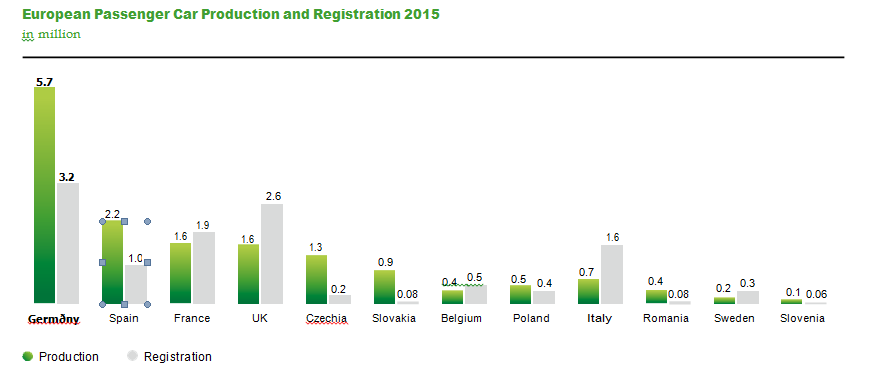
Courtesy@ http://www.gtai.de/
Conference Highlights
- Automotive Engine
- Automotive Vehicles and Design Technology
- Fuel Economy
- Alternate Energy Sources
- Automotive Electronics
- Vehicular Automation and Automatic Driving
- Tire Science and Technology
- Braking System
- Automotive Safety
- Automotive Cyber Security
- Automotive Testing
- Automotive Industry
- Noise, Vibration and Harshness (NVH) in Automobiles
- Automotive Ergonomics
- Automobile Pollution and Control Management
- Emerging Trends in Automotive Engineering
To share your views and research, please click here to register for the Conference.
To Collaborate Scientific Professionals around the World
| Conference Date | September 28-29, 2017 | ||
| Sponsors & Exhibitors |
|
||
| Speaker Opportunity Closed | Day 1 | Day 2 | |
| Poster Opportunity Closed | Click Here to View | ||
Useful Links
Special Issues
All accepted abstracts will be published in respective Our International Journals.
- 1. Advances in Automobile Engineering
- 2. Journal of Material Sciences & Engineering
- 3. Journal of Pollution Effects & Control
Abstracts will be provided with Digital Object Identifier by







